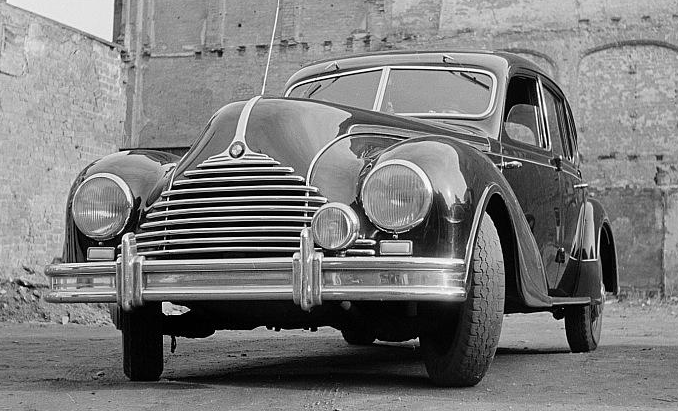The reason I mention this is because the P2 features several design elements from American Ford Motor Company cars of the mid-1950s when the P2 was styled. These are noted below. Images are factory-sourced or are from cars actually or apparently listed for sale.
1957 Taunus P2 Standard
The entry-level P2 has a two-element grille used only for that model year.
1957 Taunus P2 De Luxe
This fancier De Luxe Taunus has a different grille
Overead view of a P2 Standard
Side view, 1960 Taunus P2 De Luxe
Compare the passenger compartment greenhouse to that of the 1952-54 Ford Tudor shown below.
1954 Ford Customline Tudor
American Fords were larger than German Taunus's, so the greenhouse designs are not identical. That said, they are clearly similar.
A four-door P2 Standard sedan
The zig-zag side chrome strip was used as two-tone paint delimiter.
1956 Mercury Custom Two-Door Sedan
It seems to have been inspired by the zig-zag feature of 1956 Mercurys.
Rear quarter view of a P2 De Luxe featuring the tail light assembly
Aside from vestigial tail fins, the tail light assemblies also reflect mid-1950s American Ford practice.
1956 Ford Mainline Tudor
This tail light assembly design first appeared on 1955 Fords and Ford Thunderbirds.
Ford imported Taunus P2s to the USA in 1960, so these stylistic similarities might have been useful from a marketing standpoint. However, I am skeptical that the features discussed in this post were included with export in mind. That is because the large-scale import boom led by Volkswagen was not underway when the P2 was styled, so there was little motivation to borrow American Ford styling for export sales purposes.
























































